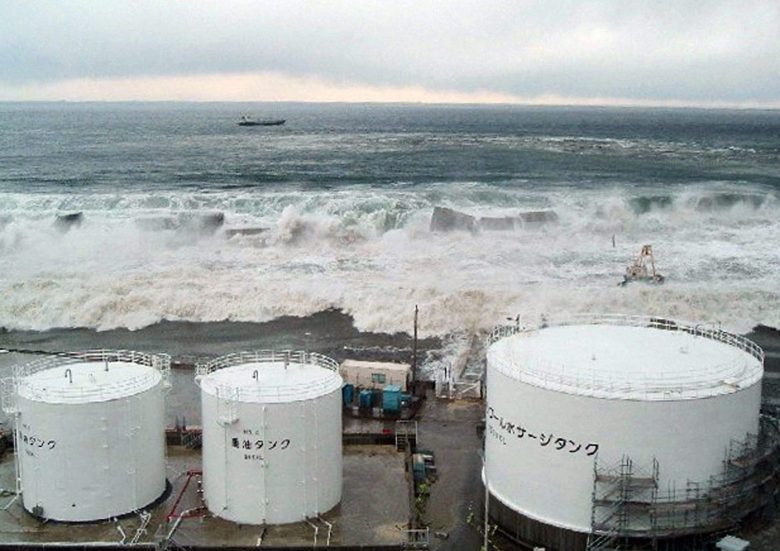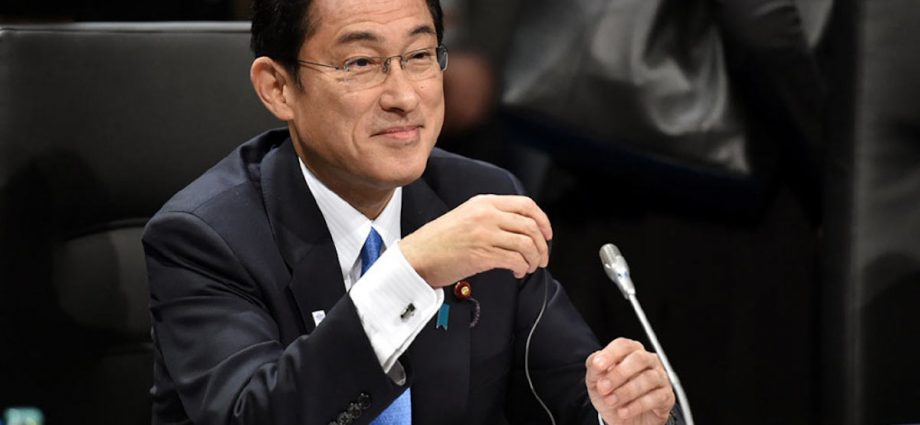Russia’s invasion of Ukraine has pushed Japan to reevaluate its energy strategy once again. A sharp rise in the price of LNG, a lack of energy alternatives to reduce reliance on Russian LNG imports and Tokyo’s commitment to phasing out Russian coal and oil imports — all while ensuring Japan’s energy security — are making this reevaluation difficult.
Even measures such as wearing turtlenecks to reduce energy consumption have been suggested.
The Japanese government is unsurprisingly using the uncertainty around energy security as a reason to proactively push its nuclear energy policy. The policy can be traced to former prime minister Shinzo Abe’s administration.
In 2012, following the Fukushima nuclear disaster, Abe put nuclear energy back on the table as a potential critical energy source for Japan. Nuclear power has been touted as an important pillar in enhancing Japan’s energy self-sufficiency. Its use is also proposed as a way to reduce greenhouse gas emissions, meet decarbonization targets and a valuable source of baseload electricity.
Japan’s Prime Minister Fumio Kishida has been emphasizing the importance of nuclear power, calling for accelerating nuclear energy use on several occasions in the past year.
But the Kishida cabinet’s Green Transformation (GX) strategic plan is being criticized for merely restating Japan’s decade-old energy policy goals while pledging to accelerate the previously promised trend of nuclear energy use over the next ten years.
GX assumes that nuclear power will account for 20–22% of Japan’s energy mix in 2030 — a target that the Japanese government proposed in its Basic Energy Plan in 2014. In 2022, though, nuclear power only accounted for around 8% of the electricity supply.
Kishida’s government hopes to extend the operation of nuclear power plants beyond the current 60-year limit to achieve this target. While the government believes life extensions are considerably cheaper than building new plants, they still represent substantial capital investments.

The International Energy Agency estimates that extending the operational life of one gigawatt of nuclear capacity for at least 10 years costs US$500 million to $1 billion. Even though countries like the United States have extended the lifespan of their reactors, no reactor in the world has been in commercial operation for more than 60 years.
Kishida’s cabinet also proposes replacing aging nuclear facilities with new technologies like light-water reactors, small nuclear reactors and nuclear fusion. While these technologies could be promising, their present commercial viability is questionable.
Even if nuclear power supplies only 10% of Japan’s electricity after 2050, more than 10 new reactors may have to be built. Reactor restarts also incur significant costs ranging from $700 million to $1 billion per unit, regardless of reactor size or age. From the 2011 financial year to March 2017, total restart costs were estimated to be 1.9 trillion yen ($17 billion) for eight companies, according to a Japan Atomic Industrial Forum survey.
Yet according to polling by Nikkei, 53% of Japanese support restarting reactors so long as safety can be ensured — the first time a majority has favored this in over a decade. But stringent safety regulations, Nuclear Regulation Authority inspections and citizens’ class action lawsuits against reactors have hindered the desired pace of a post-Fukushima return to nuclear power.
These bottlenecks continue to exist, even while public opinion might be shifting. However, over 3,000 public comments received were critical of the nuclear policy shift. As a result, Yasutoshi Nishimura, Japan’s Minister for Economy, Trade and Industry, has stated that the government’s plan would be explained clearly to deepen public understanding of it.
In response to Kishida’s announcement to consider the construction of new nuclear power plants in Japan, former prime minister Junichiro Koizumi reiterated reasons why the policy could fail. Other than stressing safety and financial concerns, he emphasized the dangers of nuclear waste and the challenges in finding a disposal site.

Previously, observers have highlighted the need for Japan to provide more clarity on its nuclear energy policy, especially regarding the fate of existing nuclear reactors. The steps the government is taking to promote nuclear energy show the direction Japan intends to take.
But there continue to be questions about how the government’s goals related to nuclear energy will be achieved — especially around issues such as radioactive waste treatment, risk minimization and commercial feasibility.
Stable political leadership, consistent stakeholder engagement and appropriate legislation are required to make the government’s vision for nuclear energy to become a critical element in Japan’s energy mix a reality.
But the government should be mindful of cost–benefit analyses and ensure the push for nuclear energy does not come at the cost of reversing the expansion of renewables.
Dr Parul Bakshi holds a PhD from Jawaharlal Nehru University, India. She is a Former Special Research Student and Japan Foundation Fellow at the University of Tokyo, Japan. She is a co-editor of India-Japan Relations @70: Building Beyond the Bilateral.
This article, republished with permission, was first published by East Asia Forum, which is based out of the Crawford School of Public Policy within the College of Asia and the Pacific at the Australian National University.

